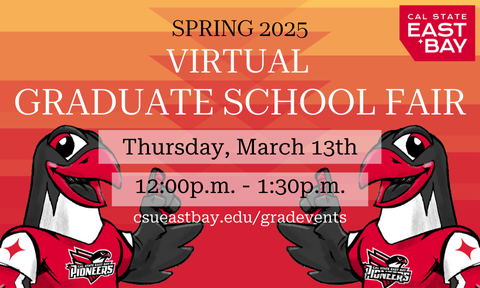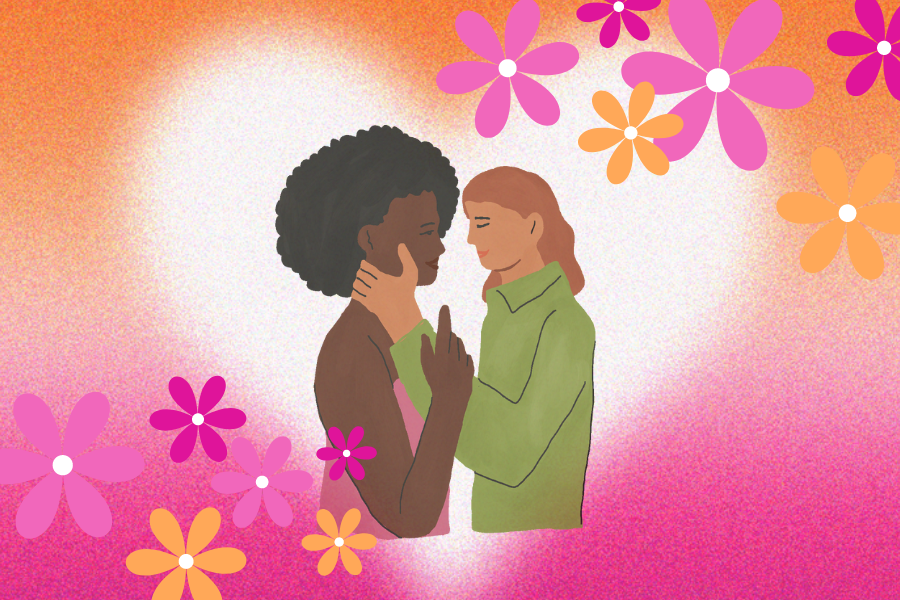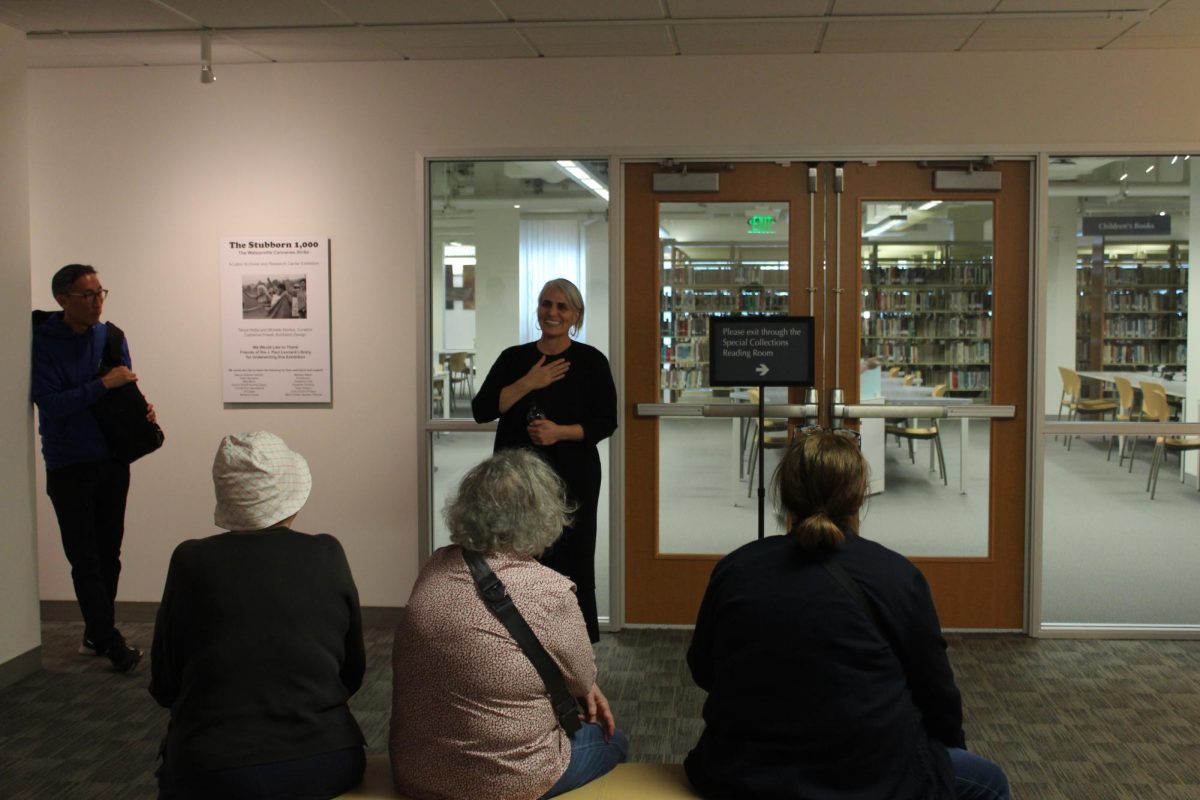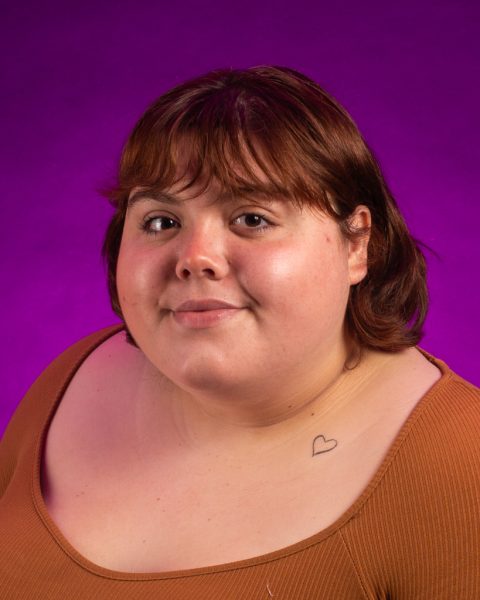In ninth grade, Angelia Vang was sat down by her father.
“Are you a lesbian?” he asked.
Vang didn’t know how to respond or how her father found out she liked other girls — at the time, she identified as bisexual. During high school, she went to an all-girls Catholic school.
“They [Vang’s parents] thought I became queer once I started going to that high school, which wasn’t the case, but they were threatening to pull me out of that all-girls high school,” Vang said. “I felt like my choice to come out was taken away from me.”
Vang continued to stay at the Catholic school due to a scholarship she won. She opted to attend college at San Francisco State University due to its vibrant LGBTQ+ community, seeking an environment that embraces her identity more than her hometown of Sacramento. She has since been able to find multiple communities that fit her identity, including the League of Filipino Students, Resist U.S. War and the Asian and Pacific Islander Queer and Trans Club.
“I knew there would be huge amounts of queer communities here and also lots of acceptance, for not just queer people, but for people of color,” Vang said.
International Lesbian Visibility Day has transformed since its inception in the 1990s, blossoming into an internationally recognized holiday in recent years. The goal is to commemorate achievements and acknowledge issues in the lesbian community. The purpose of the day is to celebrate queer and lesbian women or anyone who identifies as a lesbian.
According to census data published by the Public Policy Institute of California, 9.1 percent of the population identifies as a part of the LGBTQ+ community in 2022. San Francisco is known as “the gay capital of the world” because of its large population and extensive resources for LGBTQ+ people.
Amy Sueyoshi, the vice president of academic affairs and provost at SFSU, moved to San Francisco in 2002. Although they were born and raised in the Bay Area, they didn’t discover the large LGBTQ+ community until moving back after grad school.
As a historian with a focus on queer studies, Sueyoshi has published “Discriminating Sex: White Leisure and the Making of the American ‘Oriental’ and Queer Compulsions: Race, Nation, and Sexuality in the Affairs of Yone Noguchi.”
“I didn’t come out until later in life, meaning my late twenties,” they said. “I was in grad school in Los Angeles and at the time, the word lesbian was available to me, as well as the word dyke.”
The provost came out in the late 1990s when the term lesbian was primarily used to describe white middle-class women. Sueyoshi has immigrant parents and is not white, causing a disconnect with the term “lesbian” that led her to reject the label initially.
“[The term lesbian] didn’t resonate with me, so I chose the identity dyke at the time,” they said. “And dyke was more of a politicized identity — I was refusing patriarchy. To me, the word dyke had a more politicized connotation.”
Sueyoshi identifies as a nonbinary lesbian because that language and identity are available to who they are today. They wanted students to know that the LGBTQ+ community is constantly changing.
“I think it’s one part patriarchy; we live in a world that doesn’t necessarily advance women in the spotlight,” said Sueyoshi about why there isn’t a lot of attention towards the lesbian community. “And then, at the same time, I think very few queer folks who are assigned female at birth are actually identifying as lesbians.”
Sueyoshi said she knows very few people under the age of 40 who identify as lesbian.
According to Gallup, one in five Generation Z adults are a part of the LGBTQ+ community. Lesbians make up 15%of the community in the United States in 2024. Bisexuals make up most of the LGBTQ+ population at 57%.
“Lesbians have played a huge part in the history of the LGBTQ community,” said Remy Dorfman, the outreach coordinator for Queer Alliance at SFSU. “Know that lesbians come in all shapes, sizes and forms. Someone’s identity does not hinder them from being a lesbian. It encompasses non-men loving non-men.”
Lesbian Visibility Week was formed in 1990 in West Hollywood. Between the years of 1990 and 1992, lesbians moved visibility week to mid-July to raise awareness, according to Yahoo News.
It was born out of frustrations within the community about being in the shadow of gay men, who often received higher visibility. The week of awareness was also put into place to bring awareness to the struggles lesbians face, including sexualization and fetishization from straight males.
“Specifically facing the lesbian community, sexualization is crazy,” said Nakai Brock, a second-year anthropology student who identifies as lesbian. “I have friends who are two femmes in a relationship and the sexualization they get walking down the street together is actually crazy.”
Brock explained that how lesbians present themselves can affect the way they are treated. According to Brock, lesbians who dress more feminine are more likely to be sexualized, while masculine-presenting women can be put into a dangerous position by straight men.
“I feel because masculine women are so far against what men think they’re able to fuck, their reaction is just to be violent,” Brock said.
In 2020, a journalist and publisher, Linda Riley, wrote an article for Diva Magazine about International Lesbian Visibility Day. Diva Magazine is a publication for LGBTQ+ women and non-binary people. According to Diva Magazine, Riley created momentum for the Lesbian Visibility Day movement.
This week, there were no planned events at SFSU for Lesbian Visibility Day or the week itself. But there are clubs and organizations on campus centered around LGBTQ+ awareness and community, such as the Queer Trans Resource Center, the Queer Alliance, Education and Referral Organization for Sexuality, The Women’s Center and EGay.
Aloe Bell is a communications major who is graduating this spring. Bell is from San Jose and works for Associated Students, where she found community in the Queer Trans Resource Center. The future graduate said she was disappointed with the lack of events or representation for Lesbian Visibility Week.
“Even though it says lesbian in the name, it’s not just about lesbians,” Bell said. “It’s more about the fact that we are bringing visibility to a part of the community to bring solidarity –– to make it more comfortable to be queer and out. In places like San Francisco, we forget that it’s such a privilege.”









